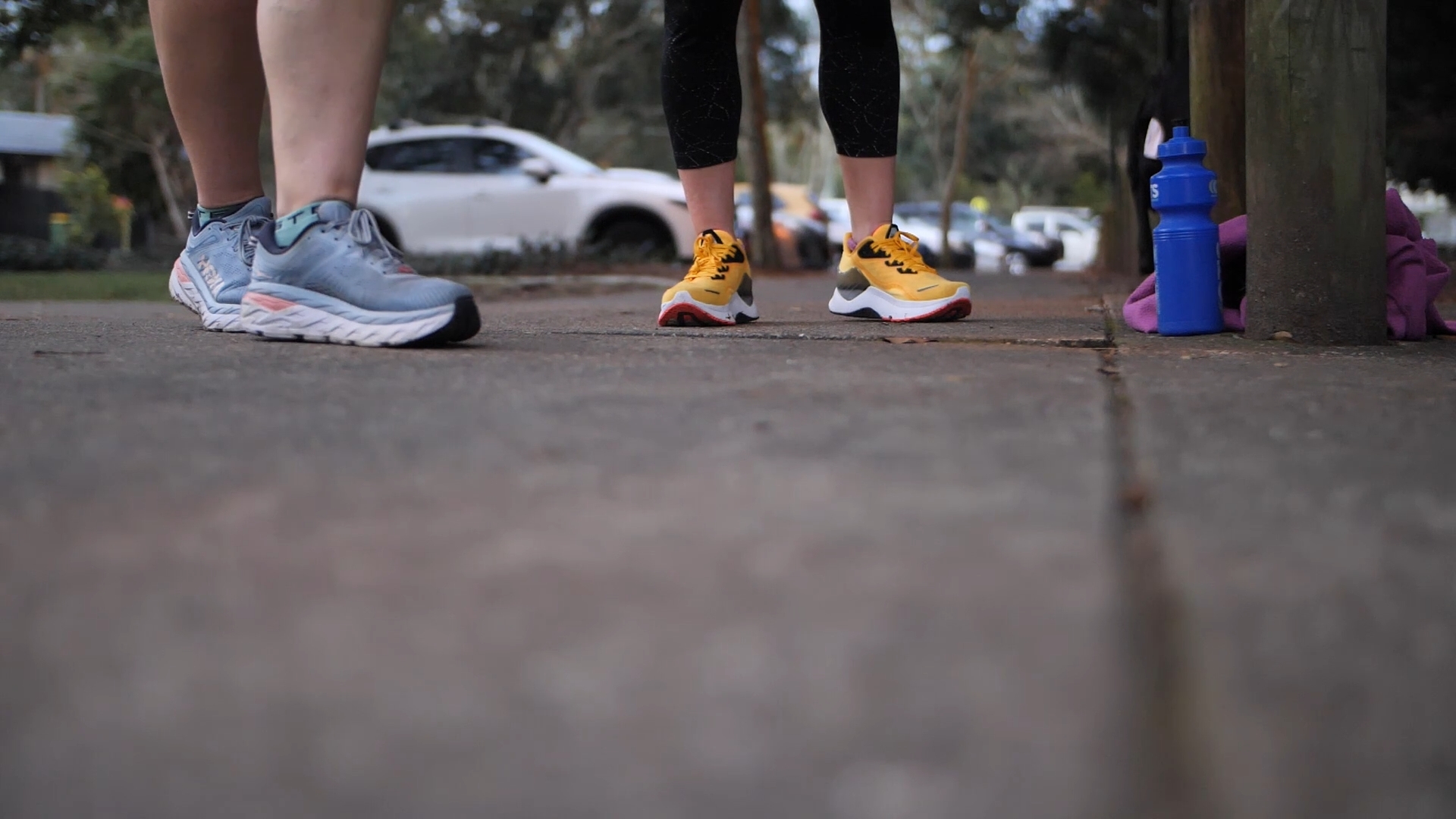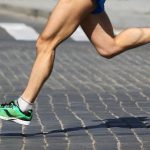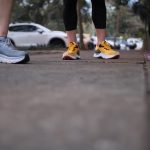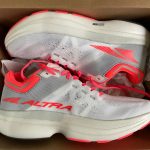
Super shoes have been around for a while now, but their popularity has exploded in recent years. Thanks to advances in design and materials, these shoes are now lighter and more comfortable than ever before.
They’re not just for professional athletes anymore; more and more everyday runners are turning to super shoes to help them improve their performance.
What is a super shoe?
Running shoes have come a long way since the early days of canvas and leather. Today, there are all sorts of high-tech features designed to give runners an edge.
The super shoe is designed to return as much energy as possible. The new midsole foams are lightweight and bouncy. A carbon plate provides stability to the shoe and helps the foam compress and expand faster for increased energy return. The rocker sole ensures a smooth transition from heel to toe, propelling you forward.
This could be just what you need to take your running to the next level.
Why are they super?
Over the last 5-10 years, shoe designers have made a technological leap with racing shoe design. Whilst various shoe companies had experimented with different tech, like carbon plates, at various times, Nike engineers landed on the secret sauce and pioneered the way with the Vaporfly 4%.
Nike developed this new lightweight Pebax or ZoomX foam, which increase the energy returned in each step from around 65% to 85%. Then they added a curved carbon plate, which gave the shoe stiffness and a propulsive feel via a rocker sole shape.
The Vaporfly 4% started the global super shoe phenomenon and gave Nike a massive advantage for several years as other shoe brands tried to catch up. However, in recent times, other shoe brands are definitely making inroads into Nike’s advantage and coming up with their own spin on these shoes.
Do they really make you faster?
Nike’s research indicated that this combination of features in their Vaporfly 4% shoe provided an economy increase of, you guessed it, 4%. That means the energy being returned by the shoes makes running is 4% easier, which typically means you can go faster. It’s important to note that the 4% is an average across their research sample, and is economy, not speed. People respond differently to these shoes, so some people will have increased economy and/or speed and some will have less.
Back in 2019 NY Times posted an article with analysis of data from across the globe showing a clear, demonstrable increase in performance for people wearing these shoes. I’d only just started hearing the hype about these shoes, but when I saw the numbers from this article, I knew I had to try it and see for myself.
On a personal, anecdotal level I have a couple of pretty clear examples of the economy and speed increase from these shoes. These examples show a quantum leap in performance.
- I did Wishart Parkrun on consecutive weeks at the same intensity level. The first week was in some Brooks Glycerines and the second week was in the Vaporflys. I was a whole minute quicker in the Vaporflys, so 12 seconds per kilometre quicker.
- In 2019, I did the Sunshine Coast half marathon I wore the Vaporfly 4% shoes for my first big event. I hadn’t been able to run sub 1:50 in previous half marathon attempts, whereas I finished this event in 1:45:12. A PB by 6 minutes.
My PBs across every distance have been achieved wearing the Nike Vaporfly Next%, which was the successor to the 4% and provided even more economy and speed improvements. If you see me wearing the Vaporflys, you know I’m serious about the run I’m about to do.
What’s the downsides?
Generally, the midsole foam used on these shoes isn’t very durable. So the responsiveness wears out over a period shorter than you’d like. You don’t get as good an effect after a few hundred kms. I joke that you’re paying a dollar per km for these shoes. Depending on how your foot strikes, you can find they scuff and wear in certain places more than others. Some brands are putting more effort into durability now with certain designs.
Given the concerns with their durability, these shoes are probably best saved for effort days. I save mine for mainly race day, but plenty of people use them for interval work, maybe when the shoes are nearing their end of life. You typically wouldn’t wear the racing super shoes on easy runs, even though they definitely reduce the stress on your legs. There are some training super shoes models I’ll talk about later that are candidates to wear on easy runs.
These shoes don’t come with any stability features, so if you’re someone who buys stability shoes you may be scared off these. I have a history of wearing orthotics, so this was definitely a concern for me. I started out wearing orthotics in these shoes, but have recently worked out that I can last the distances at speed in these shoes without orthotics. Of course, this is unique to everyone so it’s something to think about.
Is it fair to wear super shoes when they provide this advantage?
Good question. There’s a lot of debate in the global running community about these shoes. There’s no doubt that running times have come down dramatically in the last 5 years. Every distance event now you’re seeing runners run PBs and records that weren’t previously achievable. Marathon times are down across the board, and Eliud Kipchoge famously ran his sub 2 hour marathon in 2019 wearing super shoes. If you watch carefully, nearly every athlete is wearing some variant of these shoes nowadays. You basically can’t compete without them.
There’s valid concerns that there’s no longer meaningful comparison possible between today’s records and those from previous times. We’ve lost that, and we can’t get that back.
There were also concerns that the advent of these shoes would mean that it was no longer about the runner, but more about the tech. Similar to swimming when they went through their swimming suit controversy. In response, World Athletics have mandated some maximum standards for these shoes to constrain how out of control we get. The maximum standards they chose, just happened to align with the Nike Alphafly shoe that had been released. A decision that smacked of convenience and reducing impact on Nike, rather than anything based on science. The standard is 40mm total stack height of the midsole, and no more than one stiff plate.
Availability of these shoes was also a key issue for a period there. For athletes sponsored by companies other than Nike, they were at a significant disadvantage. However, in recent times most major shoe companies have brought out products to even the field somewhere, so everyone should be able to use a pair if they want.
The only other factor is how well you respond to these shoes. There’s no doubt some people respond better to this technology so their performances increases more significantly than others.
So what are the super shoes of choice at the moment?
I’m going to cover a few different options out there from the various brands.
NIKE
- VAPORFLY
- These have iterated from the 4% to the Next% and now the Next% 2 are out
- They are unquestionably the fastest shoes I’ve worn. All my PBs are from these shoes. I nickname them White Magic.
- You can see the fundamentals of the design – thick, bouncy midsole, carbon plate and that rocker sole shape to propel you forward.
- The only criticism I have for these shoes is they are slightly narrow. Nike try to keep the shoes as narrow as possible to keep the weight down. Depending on your foot width, you might find they are a bit tight for you.
- I like a shoe with a decent heel drop, so at 8mm drop these work well for me.
- ALPHAFLY
- The Alphafly Next% are the shoes prototyped and used by Eliud Kipchoge in the Ineos Sub 2 Marathon. They are about to release an Alphafly Next% 2 shoe soon.
- I haven’t worn these myself. I certainly hope to pick up a pair on discount one day.
- These are super high stack and high tech shoes. You can see these also come with a air pod in the forefoot for extra pop.
- These shoes are more polarising than the Vaporflys. Some people love them more than the Vaporflys, and some just don’t like how they feel and the effect they have on your gait.
- I think these shoes might reward people with a classically beautiful running action. Combined with a smaller 4mm heel drop, I’m not sure they’ll suit me. That won’t stop me wanting to buy and try them though.
NEW BALANCE
- FUELCELL TC
- This is one of New Balance’s super shoes models. The TC (Training and Competition) is a shoe designed to be more durable and usable for training.
- These are one of my favourite ever shoes. I’ve owned a couple of pairs now. They make running feel easier and I find them pretty versatile. I find that my body gets less stressed from long runs in these shoes.
- They’re not in the same league as the Vaporfly when it comes to speed.
- They have a heel drop of 8mm which is perfect for me.
- FUELCELL RC ELITE 2
- This is New Balance’s racing competitor to the Vaporfly – RC (Racing and Competition).
- I absolutely love this shoe. They have a really, soft and bouncy feeling. More than the Vaporfly. They’re a bit wider and more comfortable than the Nike shoes. Speedwise, I think they’re close to the Vaporfly, but not quite there.
- Depending on your priorities, you might choose these ahead of the Nikes if you want to sacrifice a bit of speed for comfort. However with that softness comes a bit of instability. So that might be a consideration.
- These also have a heel drop of 8mm.
- SUPERCOMP
- The Fuelcell models are being superseded by the Supercomp range.
- The Supercomp TC is already out and has replace the Fuelcell TC. It comes with the same Fuelcell foam, but has a comically sized 50mm stack, which are not race legal. But the Supercomps TC are designed for maximum cushioning for your long runs.
- Opinion seems mixed on the Supercomp TC. Seems like there’s just too much shoe going on.
- There is a Supercomp RC coming out early in 2023, which I’m keen to try. With how much I love the RC Elites, I’m interested to see where new balance take these shoes.
ASICS
- METASPEED SKY+ AND EDGE+
- Asics have taken a slightly different route with their supershoes. They’ve released two variants of the Metaspeed with slightly different characteristics to suit different runners.
- They’ve recently updated these shoes, which you’ll identify with the + branding against. This latest iteration is distinctive via the green and gold colours used.
- The Sky+ are said to be designed for stride runners – people who increase their stride length when they want to go faster.
- The plate is higher in the midsole, which means there’s more foam under it. It provides a more bouncy feeling.
- It also has a sharp rocker shape, which starts further forward in the forefoot. This is due to the carbon plate facing upwards.
- The Sky+ have a heel drop of 5mm.
- The Edge+ are said to be designed for cadence runners – people who increase their cadence when they want to go faster.
- The plate is lower in the midsole, which means there’s more foam above the plate. It provides a more stable feeling than other shoes.
- It also has a less pronounced rocker shape, which starts further back in the forefoot. You can feel the shoe disappearing under the balls of your feet early, and propelling you forward.
- The Edge+ have a heel drop of 8mm.
- Not really being sure what would work best for me, I went into a shop and tried both of these one. In the end I opted for the Edge+ which I think is more suitable to me. It’s a bit more stable, has a higher heel drop and I’m probably a cadence runner when I think about it.
- Comparisons I’ve read have equated the Sky with the Alphafly, and the Edge with the Vaporly.
- I’ve been very impressed with the Edge+ shoes in the runs I’ve done so far. They are more comfortable and stable than the Vaporflys, but the speed seems right up there. More testing to do to fully compare. I still probably trust the Nike Vaporfly as my go to PB attempt shoe.
- The Sky+ are said to be designed for stride runners – people who increase their stride length when they want to go faster.
SAUCONY
- SAUCONY ENDORPHIN SPEED
- Similar to how New Balance have their training shoe option, Saucony have a training option in their Endorphin range – the Endorphin Speed.
- The Endorphin Speed comes with a nylon plate instead of carbon. Being a training shoe, they’re more durable than their racing counterpart the Endorphin Pro.
- They are now at version 2 or 3 of this range. I know they’re really quite popular shoes.
- I only have version 1. I use them for interval work only. They are pretty fast, but they don’t really give me the super shoe sensation that I’m looking for, as they’re a bit firmer than other shoes.
-
- Saucony have recently release V3 of their Endorphin Pro range, and there is some significant hype about these shoes.
- They’ve been revamped in a way that makes them barely recognisable from V1 and V2 of the Pro range. They have increased the stack size and have a bouncier foam. Reviews online are unanimously glowing for these shoes.
- At 8mm drop they’re also perfect for me.
- I will be buying a pair of these, as soon as humanly possible.
There are also super shoe options from Adidas, Brooks and Hoka but I haven’t been able to try those. Based on the reviews online, I’m comfortable with focusing on the Nike, New Balance, Asics and Saucony offerings. Between those, I’m sure you can find a shoe to suit you.
If you had to recommend one pair of shoes to our listeners which would it be?
The Nike Vaporfly is the most popular super shoe for a reason. It’s the original, and at this point in time, still the best. The others provide variations of the magic, but if you want the shoe which will likely make you run the fastest you can run, go for the Vaporfly.
With a bit of careful shopping you can pick up a pair for around $210AU in specials. They’re normally $310AU per pair.
Where would our listeners find out more?
I find YouTube has a lot of great channels that specialise in running shoe reviews and comparisons. A good little tip is to search for your shoe of interest and put a “vs” next to it, to see other shoes that have been compared.
I also listen to some podcasts that cover this territory. The Australian made Inside Running podcast does a monthly shoe geeks episode that covers the latest in shoes. They cover all shoes, rather than just super shoes. The hosts are a shoe shop owner and two podiatrists (they are also elite runners), so they are extremely well qualified to provide their opinion on shoes out in the market. I’ve gotten tips for all sorts of shoes from this podcast. Some of my favourite training shoes, like the Nike Invincible and New Balance 1080, I’ve found from listening to this podcast.
Finally, talking with a reputable shoe shop is also a good idea.
Author: Alan Uzarevic

Condy & Sandi Canuto
Your Everyday Runners







